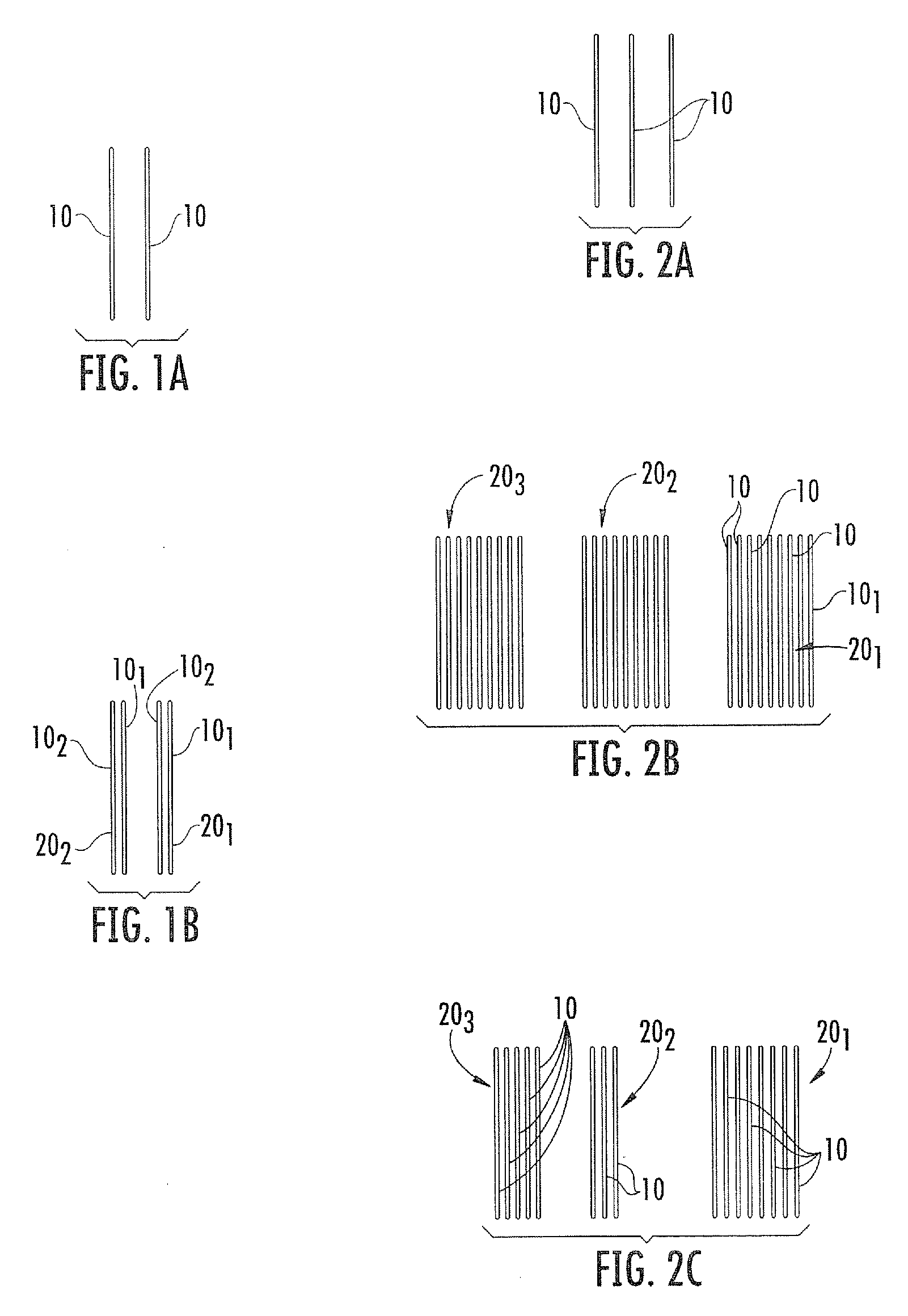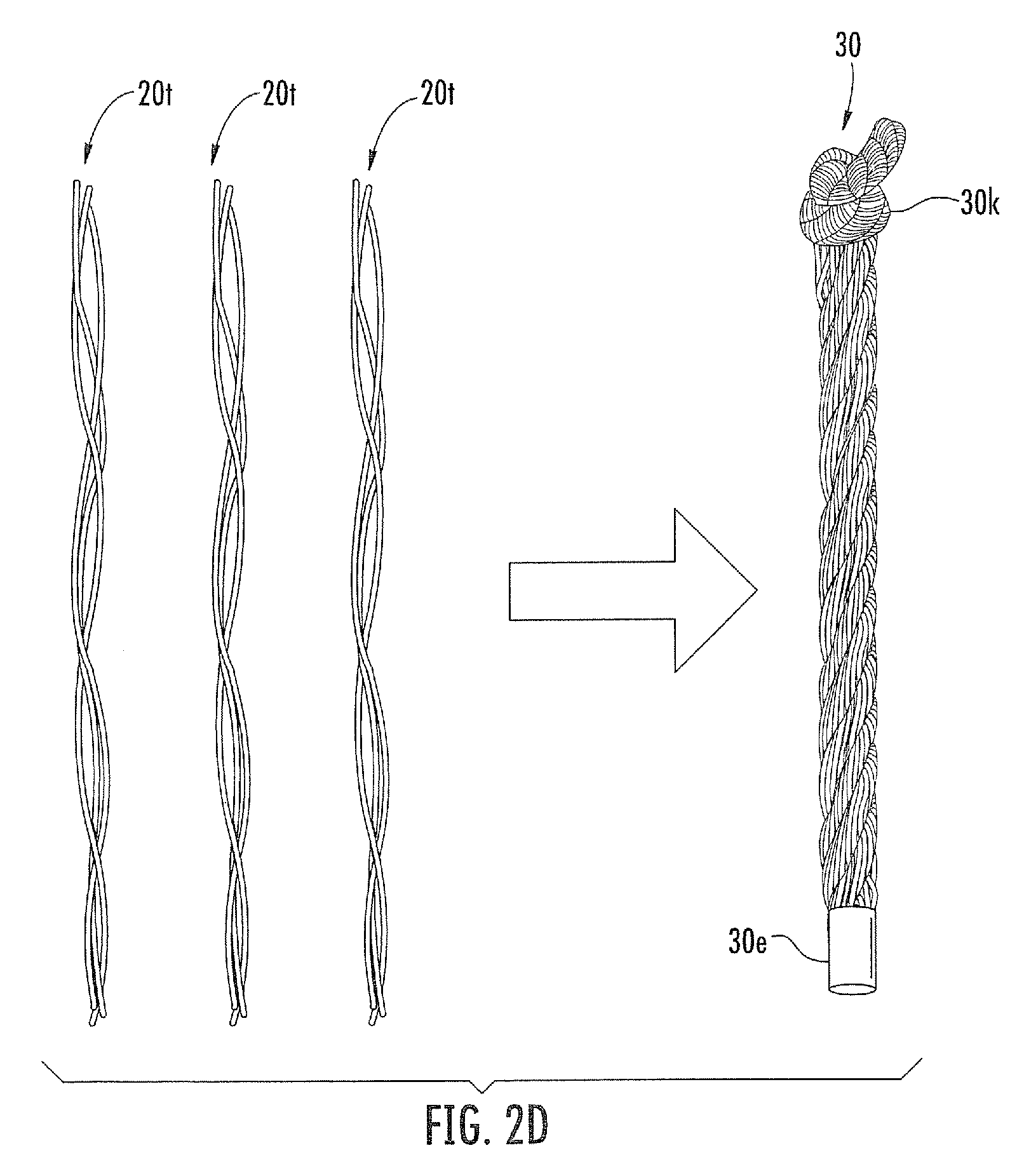Medical constructs of twisted lengths of collagen fibers and methods of making same
- Summary
- Abstract
- Description
- Claims
- Application Information
AI Technical Summary
Benefits of technology
Problems solved by technology
Method used
Image
Examples
examples
[0106]FIGS. 6, 7 and 8 illustrate exemplary twisted cables of NDGA-collagen fibers. The average size of the fibers 10 was about 80 microns (dry). The fibers were twisted dry and at room temperature. The starting fibers had a length of between about 1 m to about 1.5 m. (it is contemplated that longer fibers can be obtained in the future). The number of turns or twists formed in the fibers was about 110 turns per fiber meter on average. The twisting was carried out by using the three-strand holder CONAIR QUICK BRAID STYLING KIT. Subsequent prototypes were made by hand twisting with each fiber held substantially under equal tension. It is envisioned that a motorized twisting device can be developed for spooled fibers.
[0107]FIG. 6 is a photograph of a 30 fiber collagen cable, 10×3: 10 twisted fibers / strand ×3 strands twisted together.
[0108]FIG. 7 is a photograph of a 108 fiber cable, 4×3×3×3: 4 twisted fibers / strand ×3 strands twisted together ×3 of the former twisted together ×3 of the...
PUM
| Property | Measurement | Unit |
|---|---|---|
| Fraction | aaaaa | aaaaa |
| Fraction | aaaaa | aaaaa |
| Fraction | aaaaa | aaaaa |
Abstract
Description
Claims
Application Information
 Login to View More
Login to View More - R&D Engineer
- R&D Manager
- IP Professional
- Industry Leading Data Capabilities
- Powerful AI technology
- Patent DNA Extraction
Browse by: Latest US Patents, China's latest patents, Technical Efficacy Thesaurus, Application Domain, Technology Topic, Popular Technical Reports.
© 2024 PatSnap. All rights reserved.Legal|Privacy policy|Modern Slavery Act Transparency Statement|Sitemap|About US| Contact US: help@patsnap.com










